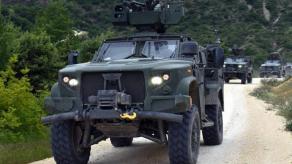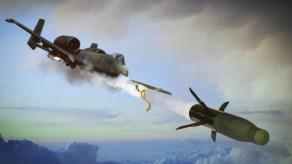Following the massive coordinated Hamas invasion of Israel on October 7th, the Israel Defense Forces launched Operation Swords of Iron, which may well be the largest Israeli military deployment in decades.
Israel's Prime Minister Benjamin Netanyahu announced that the offensive operation "will continue without reservation and without respite until the objectives are achieved." The said objective is to destroy the military and political potential of Hamas, the Islamic Jihad movement and other groups, so that Israel will "negate [Hamas's] ability and desire to threaten and harm the citizens of Israel for many years to come," as quoted by CNN.
Read more: First Conclusions of Hamas' Attack on Israel: Why Missiles Slipped Through the Iron Dome, a Merkava Tank Destroyed by a Camera Drone and Intelligence' Failure
It seems nothing less will suffice for Israel at this point because as of October 8th, the Israeli casualties are estimated at 700 people killed and over 2,200 wounded by Hamas' attack, according to several sources, including AP News and the Times of Israel, over a hundred hostages were abducted and transferred to Gaza Strip. As the investigation continues, the number may grow.
An operation of such magnitude, in turn, requires a great lot of effort and resources, so the IDF has started calling in reservists, the scale of mobilization nearing the figures of the biggest Israeli–Palestinian conflicts of the century.
The exact numbers are not disclosed but unofficial estimates say "tens of thousands" (source: BBC) reservists from the Miluim – IDF active reserve force. For the initial stage of the operation, four divisions are being deployed.
For comparison, during Operation Cast Lead in 2008-2009, around 80,000 personnel were mobilized.
While the military reserve is being prepared, the regular army are carrying out the first phase of the operation: clearing the settlements in Israel that were attacked by Hamas. The official IDF statement as of the morning of October 8th said the Israeli forces had regained control of 29 settlements but the activities were still continuing in four more towns.
It is stated that hundreds of militants had been eliminated and dozens more captured. Simultaneously, the evacuation of the civilian population from the areas bordering the Gaza Strip was progressing.
Among the most public military activities are air strikes against Hamas. About 500 targets were struck, including enemy infrastructure, headquarters, tunnels, and houses with military personnel inside, as well as "Hamas symbols and towers", the latest IDF operational report says. Particular groups of manpower also get struck from above.
Israel won't stop at that but this phase of the operation may continue for a long time. For illustration, the first air strikes during Operation Cast Lead were launched on December 27th, 2008, and the on-ground phase only started on January 3rd, 2009.
Objectively, Israel has no reason for haste for the announced goal cannot be achieved by a blitzkrieg, it is planned as a full-fledged protracted combined arms operation. Moreover, there is a serious threat of opening a second front.
Hezbollah has already opened fire from the territory of Lebanon, shelling Israeli positions adjacent to the border on October 8th and got a retaliation from IDF. Prior to that, Hezbollah officially announced that as soon as Israel invades Gaza, it will launch an attack from the north.
This way, Israel not only has to deploy units in a position for the operation in the Gaza Strip to the south of the country but also keep defense forces in the north to keep the border with Lebanon and Syria tightly shut.
Read more: How War In Israel Will Affect Ukraine As Clear Ties of Hamas with russia, Iran are Visible














